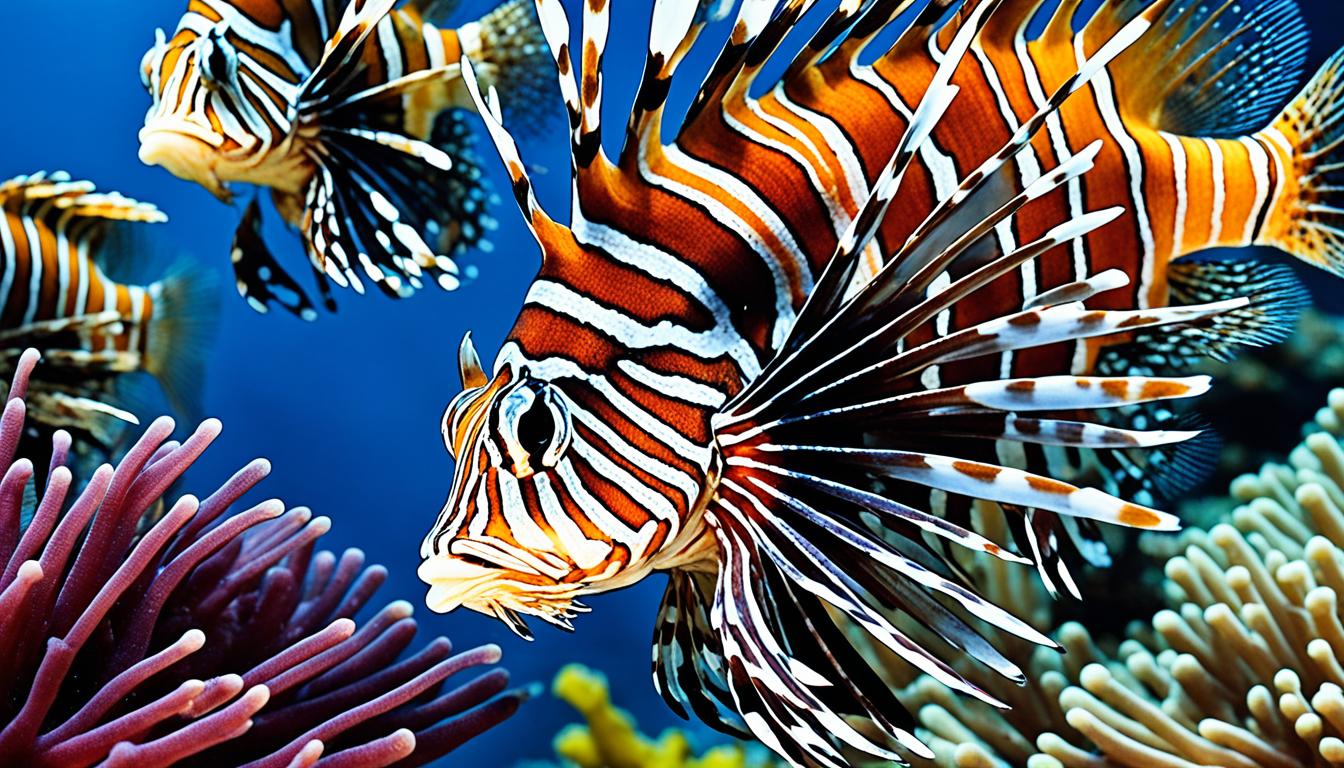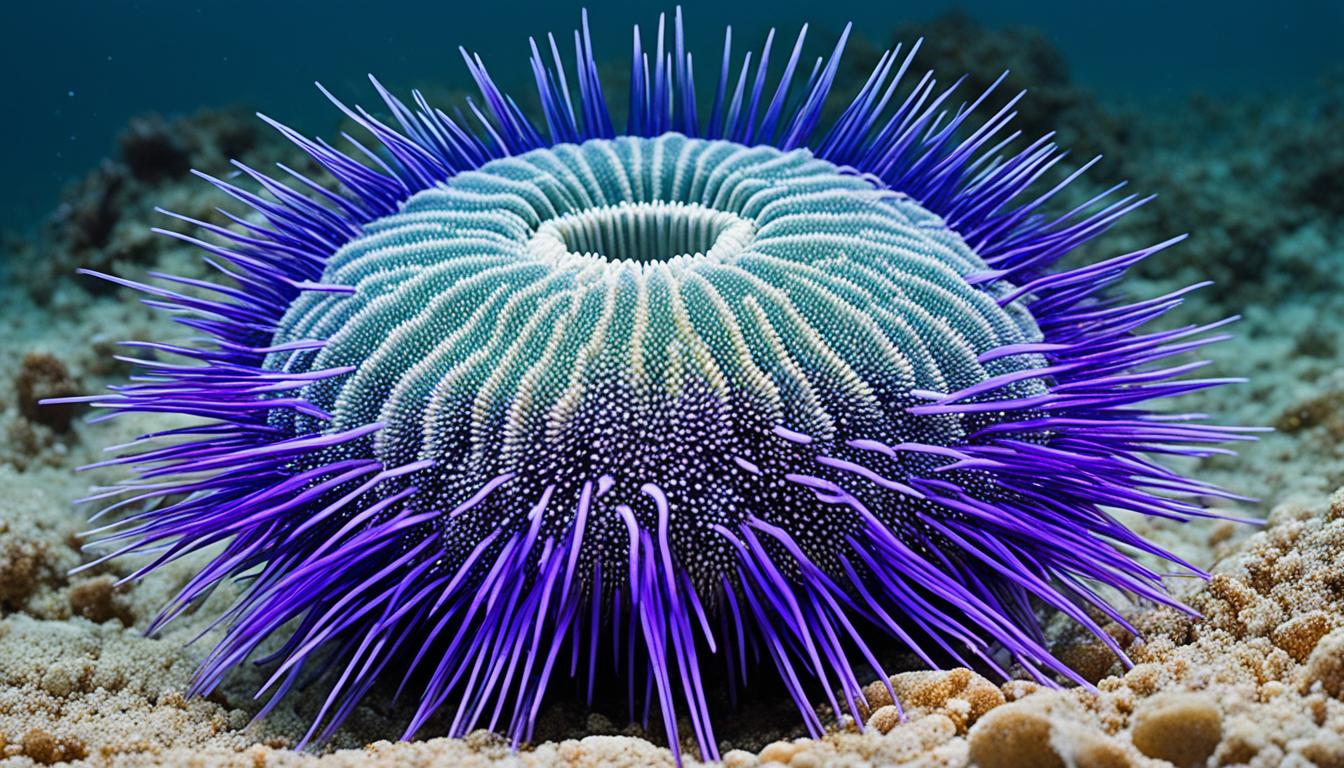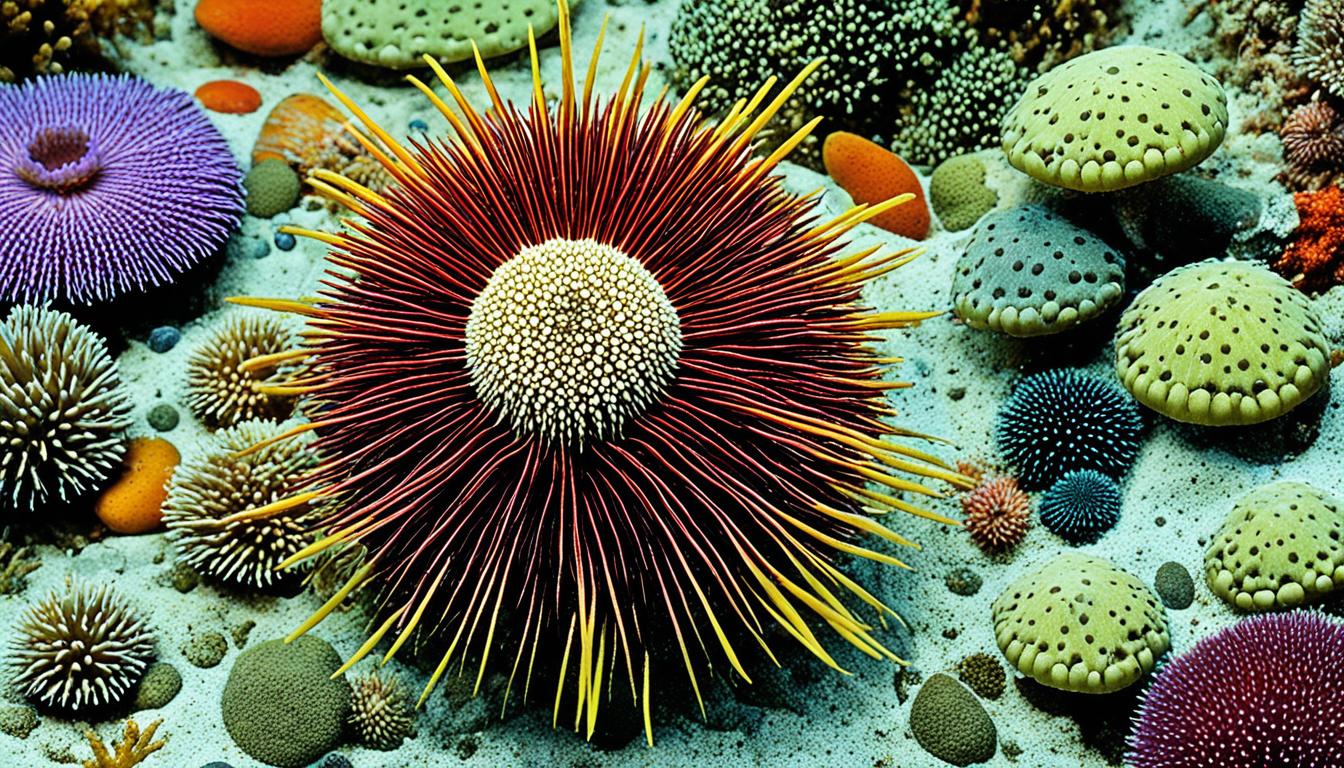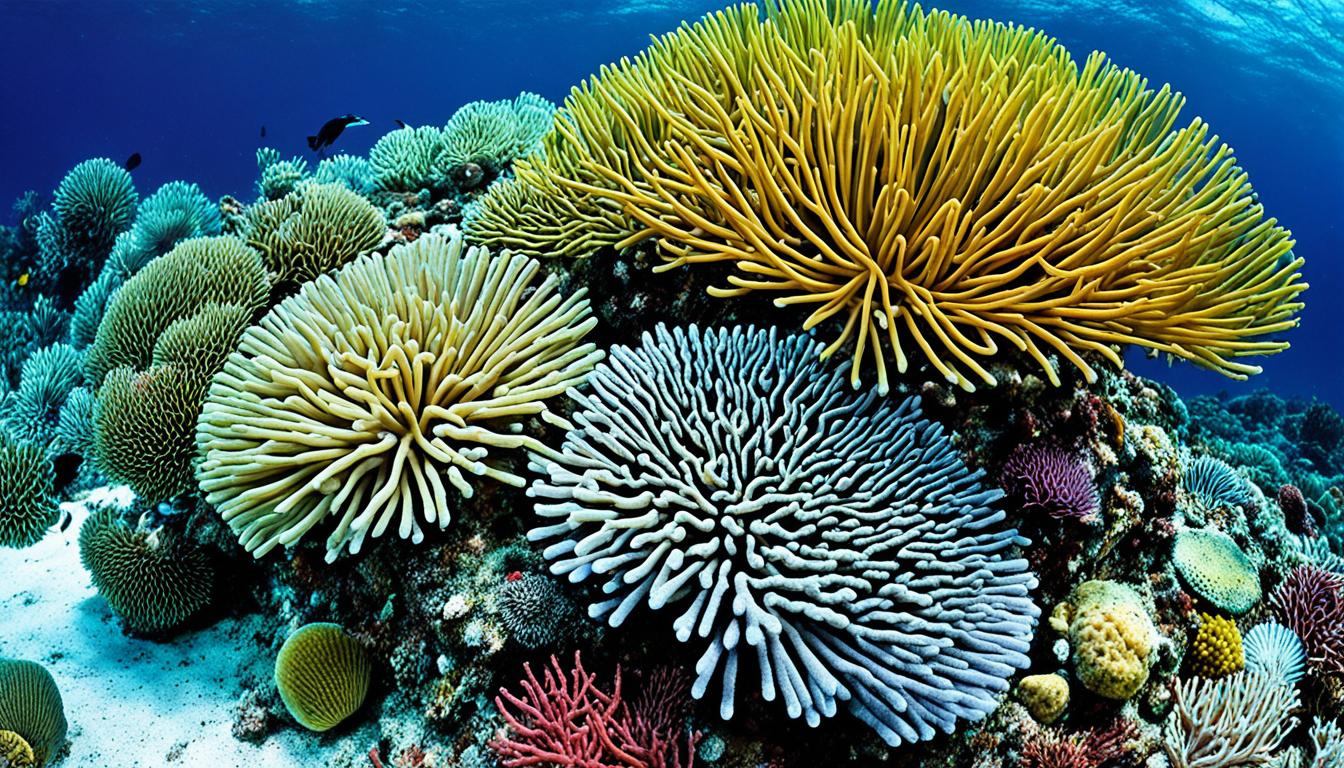Have you ever wondered if lionfish are an invasive species? They’re known for their bright looks and big appetite. Since moving to U.S. waters in the 1980s, they’ve spread fast, causing big problems for the environment.
Lionfish are originally from the Indo-Pacific but now they’re in the western North Atlantic. They’re hurting native coral reefs and eating too many local fish. This is because they eat a lot and don’t have natural enemies in their new home.
Groups like NOAA are working hard to stop lionfish from taking over. They want to lessen the harm they cause. In this article, we’ll look into lionfish, their impact on the environment, and what’s being done to control them.
Understanding Lionfish
The lionfish is a fascinating creature known for its bright look and big impact on the ocean. Learning about the scientific classification lionfish and its native habitat lionfish helps us understand its behavior and role in the sea.
Scientific Classification
The lionfish, scientifically named Pterois volitans, is part of the Scorpaenidae family. This family includes many venomous fish species. Known as zebrafish, firefish, or peacock lionfish, they have bright stripes and special traits that help them be top predators.
Native Habitat
Lionfish originally lived in the western Pacific Ocean, around coral reefs and rocky areas. These places are full of life and help the lionfish grow and hunt well. The native habitat lionfish lets them live and rule in these ecosystems. After being brought to the Atlantic by accident, lionfish have spread out, causing worries about their lionfish invasive nature and how they might harm local sea life.
The Rise of Lionfish Populations
The lionfish population has grown a lot in recent decades, especially in the Atlantic Ocean. It’s important to know how they were introduced and where they live now to understand their impact.
History of Introduction to Atlantic Waters
In the mid-1980s, lionfish first showed up off Florida’s coast. They came from home aquariums that were released into the wild. Since then, they’ve spread out a lot, moving into the Atlantic, Gulf of Mexico, and Caribbean.
This shows how well lionfish can adapt to new places. It also means they’re a big problem for the Atlantic’s waters now.
Current Distribution Trends
Now, lionfish are moving into new areas, not just near the coast. They’re even in places like mangroves and estuaries. This shows they’re doing well and could harm many other sea creatures.
As they move into different areas, they pose a bigger threat to the balance of marine life.
| Region | Year Detected | Current Status |
|---|---|---|
| Florida | Mid-1980s | Established populations |
| Gulf of Mexico | 1990s | Rapid spread |
| Caribbean | Mid-2000s | Significant invasions |
This table shows important events in lionfish introduction. It also shows how widespread this invasive species has become in different areas.
Are lionfish an invasive species?
Lionfish are known for their bright looks and interesting ways. They have become a problem in many places. This part talks about what makes them good at taking over new homes.
Behaviors and Characteristics of Lionfish
Lionfish are famous for being invaders. They eat small crustaceans and fish, like young snapper and grouper. Their diet helps them live in many different ocean places.
Their venomous spines keep predators away. This lets them grow and spread without many threats.
Comparison with Other Invasive Species
Lionfish are like zebra mussels and Asian carp in being bad for the environment. They can outeat native animals for food and space. They reproduce fast and can live in many ocean areas.
This leads to fewer native fish and changes in where they live.
| Species | Growth Rate | Primary Diet | Effect on Native Species |
|---|---|---|---|
| Lionfish | Rapid | Carnivorous (small fish and crustaceans) | Declines in native populations |
| Zebra Mussels | Rapid | Filter feeders (algae and plankton) | Clogs water systems and outcompetes natives |
| Asian Carp | Very Rapid | Omnivorous (zooplankton, algae) | Displaces native fish and disrupts ecosystems |
Impacts of Lionfish on Native Ecosystems
Lionfish in non-native habitats cause big problems for marine ecosystems. They harm coral reefs and affect native fish. It’s important to understand these effects to help these ecosystems.
Effects on Coral Reefs
Lionfish eat a lot, especially herbivorous fish that keep coral reefs healthy. These fish eat algae, which stops it from growing too much and harming corals. Without these fish, algae grows too much, covering corals and stopping them from growing.
This makes it harder for coral reefs to survive, especially with the problems caused by climate change and human actions.
Threat to Native Fish Populations
Studies show lionfish are a big threat to native fish. One study found a single lionfish can reduce native fish by up to 79%. This hurts fish that are important for food and the balance of the ocean.
This change in fish populations is bad news for coral reefs. It shows how big of a problem lionfish are for these ecosystems.
| Impact Factor | Lionfish Effect | Long-term Consequence |
|---|---|---|
| Herbivorous Fish Reduction | Decreased grazing on algae | Algal blooms harming coral health |
| Native Fish Recruitment | Up to 79% reduction | Decline in commercially vital fish populations |
| Biodiversity | Shift in community dynamics | Loss of species diversity |
Lionfish and Commercial Fisheries
Lionfish are taking over, affecting both recreational and commercial fishing. They compete with native fish for food and space. This competition hurts fishing industries, especially for anglers who target snapper and grouper.
Impact on Recreational and Commercial Fishing
Recreational fishermen are catching fewer fish because of lionfish. This issue affects not just individual anglers but also the commercial fishing world. The loss of native fish hurts local economies that depend on fishing.
Potential Benefits of Lionfish Control
Managing lionfish could bring benefits. Selling lionfish as seafood could be a new solution. It lets you help control the population and enjoy tasty meals. If done right, lionfish fishing could become a profitable business, helping local fishermen and solving the invasive species problem.
| Aspect | Impact | Control Benefits |
|---|---|---|
| Native Species | Competition leading to reduced populations | Market opportunity for lionfish as seafood |
| Recreational Fishing | Decreased catches of target species | Increasing awareness of lionfish control strategies |
| Commercial Fisheries | Economic losses due to diminished fish stocks | Development of sustainable fishing practices |
Control Measures and Management Strategies
Effective lionfish control measures are key to reducing their harm on marine life. Local groups and national agencies work together to tackle the lionfish problem. They use various strategies to manage lionfish populations. Let’s look at what local communities do and how NOAA helps them.
Local Control Efforts
Coastal areas in the U.S. have started their own lionfish control projects. These efforts include spearfishing events where divers hunt lionfish. This helps lower their numbers in certain spots.
Educational programs are also important. They teach people about the dangers lionfish pose to the ocean. By spreading awareness, local groups hope to encourage a sustainable way to manage lionfish.
NOAA’s Invasive Lionfish Web Portal
NOAA’s web portal is a key tool for learning about and managing lionfish. It provides NOAA lionfish resources like guidelines for tracking lionfish, doing research, and outreach. The goal is to bring together different groups to work on lionfish management.
With these tools, communities can make informed plans. They can tackle lionfish invasions and help keep the ocean healthy.

| Local Efforts | NOAA Resources |
|---|---|
| Spearfishing Events | Management Guidelines |
| Community Education | Research Programs |
| Cooking Workshops | Outreach Initiatives |
| Monitoring Programs | Data Sharing |
Together, local and national efforts aim to solve the lionfish problem. They work to make the ocean a healthier place.
Future of Lionfish in Ocean Ecosystems
The future of lionfish in our oceans is crucial to consider as they keep spreading and threatening native marine life. Efforts to manage lionfish are getting better with new strategies that involve the community and science. These efforts aim to lessen the harm to lionfish habitats.
As we learn more and research advances, we can find better ways to manage lionfish. The key is to make these strategies flexible. By watching lionfish numbers and changing our actions, we can help protect marine life and deal with the lionfish problem.
Keeping lionfish and local ecosystems in balance will take ongoing work and dedication. By staying updated and participating in lionfish management, you can greatly help shape their future in our oceans. This will also protect the complex life under the sea.










